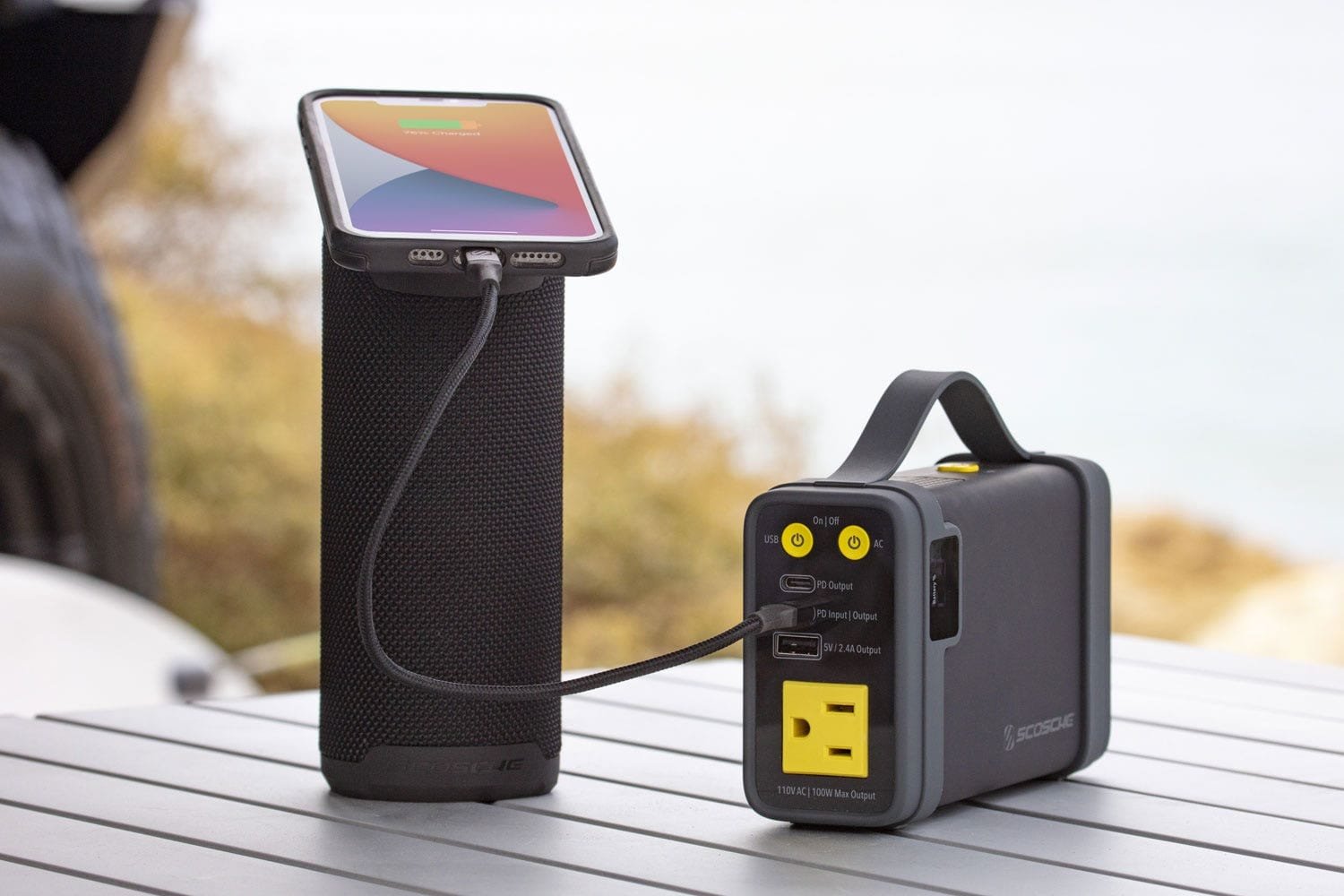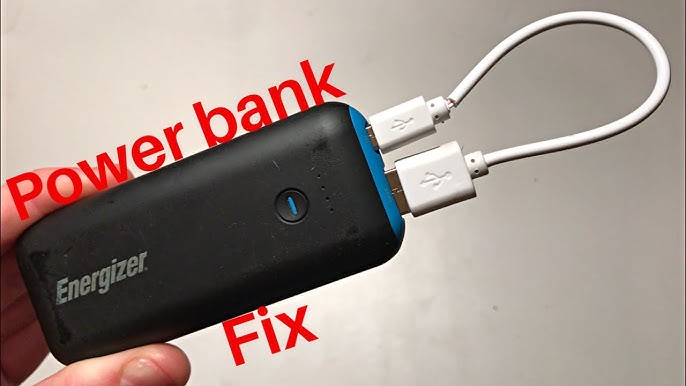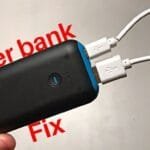
What to Do If Your Powerbank is Not Working. A powerbank that won’t turn on can be frustrating. It leaves you with a dead device and no way to charge it.
Powerbanks have become essential tools for keeping our gadgets charged. What to Do If Your Powerbank is Not Turning on. They are handy, especially when traveling or during power outages. But what happens when your powerbank refuses to turn on? You might think it’s broken, but sometimes, the fix is simple.
In this blog post, we’ll explore possible reasons why your powerbank isn’t turning on and provide practical steps to get it working again. Understanding these solutions can save you time and money, and help you avoid the hassle of buying a new powerbank. Keep reading to learn how to troubleshoot and revive your powerbank.

Credit: www.youtube.com
Check The Charging Cable
When your powerbank is not turning on, one of the first things you should do is check the charging cable. The charging cable is a crucial component in ensuring your powerbank is properly charged and ready for use. Here are some steps to help you identify if the charging cable is the issue.
Inspect For Damage
First, take a close look at your charging cable. Sometimes, the problem lies in visible damage that can easily go unnoticed. Inspect the cable for any signs of wear and tear. Look for:
- Frayed wires
- Bent or broken connectors
- Exposed internal wires
Even minor damage can disrupt the charging process. If you notice any of these issues, it might be time to replace your charging cable.
Try A Different Cable
If you don’t see any visible damage, the next step is to try a different cable. Not all cables are created equal, and using a faulty one can prevent your powerbank from charging properly. Follow these steps:
- Borrow a known working cable from a friend or use another one you have.
- Plug the new cable into your powerbank and connect it to a power source.
- Check if the powerbank starts charging.
If the powerbank charges with the new cable, then the issue was likely with the original cable. Make sure to purchase a high-quality replacement to avoid similar issues in the future.
| Original Cable | Replacement Cable |
|---|---|
| Not Charging | Charging |
By conducting these simple checks, you can determine if the charging cable is the reason your powerbank is not turning on. Ensuring you have a reliable cable is key to maintaining the functionality of your powerbank.

Credit: www.youtube.com
Inspect The Powerbank Port
If your powerbank is not turning on, the problem might be with the port. A faulty or dirty port can prevent the powerbank from charging or supplying power. Follow these steps to inspect and fix the powerbank port.
Clean The Port
First, check the port for dust and debris. Use a flashlight to see inside the port clearly. Dirt can block the connection and stop the powerbank from working.
To clean the port:
- Turn off the powerbank.
- Use a soft brush or compressed air to remove dust.
- Avoid using metal objects, which can damage the port.
- If needed, use a toothpick to gently dislodge any stuck particles.
Ensure the port is clean before testing the powerbank again.
Check For Loose Connections
Next, inspect the port for loose connections. A loose connection can prevent the powerbank from working properly.
To check for loose connections:
- Gently wiggle the charging cable while it is connected.
- Observe if the power indicator lights up intermittently.
- If the connection is loose, try using a different cable.
- Ensure the port itself is not moving or damaged.
If the port is loose, it may need professional repair. Contact the manufacturer or a technician for help.
Ensure Proper Charging Source
Encountering issues with your powerbank not turning on can be frustrating. One common cause is an improper charging source. Ensuring the right charging method can prevent this issue and keep your powerbank in good condition.
Use A Wall Adapter
Always use a wall adapter to charge your powerbank. Wall adapters provide a stable and strong power supply, which is essential for charging your powerbank effectively.
- Choose a high-quality wall adapter.
- Check the output rating on the adapter.
- Ensure the adapter’s output matches your powerbank’s input requirements.
A good wall adapter prevents undercharging and overcharging, extending your powerbank’s lifespan.
Avoid Low-power Sources
Avoid using low-power sources like laptop USB ports or car chargers. These sources often provide insufficient power, leading to incomplete charging cycles.
- Low-power sources can damage your powerbank over time.
- They may result in longer charging times.
- Incomplete charging can cause your powerbank to not turn on.
Stick to reliable power sources to ensure your powerbank charges properly and functions as expected.
| Charging Source | Power Output | Recommended |
|---|---|---|
| Wall Adapter | High | Yes |
| Laptop USB Port | Low | No |
| Car Charger | Variable | No |

Credit: www.reddit.com
Reset The Powerbank
Is your powerbank not turning on? A simple reset might solve the issue. Resetting the powerbank can often resolve many common problems. Follow these steps to perform a reset and get your powerbank working again.
Find The Reset Button
First, locate the reset button. Most powerbanks have a small, hidden button. It is often near the charging ports. You might need a paperclip or pin to press it. Check the manual if you cannot find it. The reset button is usually very small. Take your time to search carefully.
Follow Manufacturer Instructions
Once you find the reset button, follow the manufacturer instructions. Each brand may have different reset procedures. Look in the user manual for detailed steps. Some powerbanks need you to hold the button for a few seconds. Others might require a series of presses. Make sure to follow the exact instructions.
If you do not have the manual, visit the manufacturer’s website. Many companies provide online manuals. You can also find support information there. Resetting your powerbank correctly can help restore its function.
Test With Different Devices
Discovering that your power bank is not turning on can be frustrating. One of the first steps to troubleshoot this issue is to test the power bank with different devices. This can help determine if the problem lies with the power bank or the device you are trying to charge.
Connect To Another Device
First, try connecting your power bank to a different device. Use a phone, tablet, or any other device that requires charging. This step helps to rule out any issues with the initial device. If the new device starts charging, the issue might be with the original device. Ensure the connection is secure and the cable is not damaged.
Check Device Compatibility
Next, verify the compatibility of your devices. Some power banks may not support all devices. Check the specifications of your power bank. Ensure that it can provide the required power output for your device. Charging a device with incompatible power requirements can cause issues.
If your power bank supports Quick Charge or similar technology, ensure the connected device is compatible. Incompatible devices may not charge properly or at all. Using devices within the supported range ensures optimal performance and safety.
Check Battery Level Indicator
Is your powerbank not turning on? It could be due to a low battery or an issue with the battery level indicator. Let’s dive into how to check the battery level indicator and what steps you can take.
Understand Indicator Lights
Most powerbanks come with indicator lights. These lights show the powerbank’s battery level. Typically, there are four lights. Each light represents 25% of the battery capacity.
If none of the lights are on, your powerbank might be completely drained. Plug it into a charger and check if the lights start blinking. Blinking lights often mean the powerbank is charging.
Here is a simple table to understand the indicator lights:
| Number of Lights | Battery Level |
|---|---|
| 1 Light | 0-25% |
| 2 Lights | 25-50% |
| 3 Lights | 50-75% |
| 4 Lights | 75-100% |
Ensure Battery Level
What to Do If Your Powerbank is Not Working. First, make sure your powerbank has enough charge. Connect it to a charger and wait for a few minutes. Check the indicator lights again.
If the lights blink but the powerbank doesn’t turn on, it might need more time to charge. Leave it connected for at least an hour.
Follow these steps to ensure your powerbank is charging correctly:
- Connect the powerbank to a known working charger.
- Ensure the cable is not damaged.
- Wait and observe the indicator lights.
If the lights do not blink or turn on, your powerbank might have a deeper issue. Try using a different charger or cable. If it still doesn’t work, consult the user manual or contact customer support.
Update Firmware
What to Do If Your Powerbank is Not Working. Update the firmware of your powerbank to fix issues. Connect it to a computer and follow the manufacturer’s instructions. This can solve the problem quickly.
Updating the firmware on your powerbank can solve many issues. This includes your powerbank not turning on. Firmware updates are like software updates for your device. They fix bugs and improve performance. Here is how you can update the firmware.
Visit Manufacturer’s Website
Start by visiting the manufacturer’s website. Look for a support or download section. This is where you can find firmware updates for your powerbank. Each brand has its own website and support page. Make sure you are on the official site to avoid fake updates.
Follow Update Instructions
Each manufacturer provides specific update instructions. Follow them carefully. Usually, you need to download a file to your computer. Then, connect your powerbank to your computer via USB. Run the downloaded file and follow the prompts. Do not disconnect the powerbank during the update. Wait until the process is complete. This ensures the firmware update is successful. “`
Contact Customer Support
Sometimes, your powerbank may not turn on even after trying various fixes. This is when contacting customer support becomes essential. Customer support can provide detailed guidance and may offer solutions you haven’t considered yet. Here’s how to effectively reach out to them.
Gather Purchase Information
Before contacting customer support, gather all your purchase details. This includes the receipt, warranty card, and any other proof of purchase. Having these documents ready will speed up the process. Also, note down the model number and serial number of your powerbank.
| Information | Details |
|---|---|
| Receipt | Proof of purchase |
| Warranty Card | Warranty details |
| Model Number | Located on the powerbank |
| Serial Number | Located on the powerbank |
Explain The Issue
When contacting customer support, be clear and concise. Describe the issue you are facing with your powerbank. Mention any troubleshooting steps you have already tried. This information helps the support team diagnose the problem quicker.
- Describe the problem in detail.
- Include any steps you have taken.
- Mention any error messages or unusual behavior.
For example, you could say: “My powerbank is not turning on. I have tried charging it with different cables and outlets. The LED indicator does not light up.”
By providing detailed information, you make it easier for customer support to assist you. Remember, clear communication can lead to faster resolution.
Frequently Asked Questions
Why Is My Power Bank Not Turning On?
Your power bank might not turn on due to a drained battery. Ensure it is fully charged. Also, check for any damaged cables or ports. If it still doesn’t work, it could be a hardware issue.
How Do I Reset My Power Bank?
What to Do If Your Powerbank is Not Working. To reset your power bank, press and hold the power button for 10 seconds. Some models may have a reset button. Check your user manual for specific instructions.
Can A Power Bank Be Repaired?
Yes, a power bank can be repaired, depending on the issue. Common repairs include replacing the battery or fixing the USB port. Consult a professional technician for an accurate diagnosis and repair.
How Long Should I Charge My Power Bank?
Charge your power bank for 4-6 hours or until the indicator shows it’s fully charged. Overcharging can damage the battery. Always use the recommended charger for your power bank model.
Conclusion
Troubleshooting a powerbank can seem daunting, but it’s manageable. Start with simple checks, like cables and outlets. Ensure connections are secure. Try a different outlet or charger. Resetting the powerbank might help. Refer to the manual for specific steps. If problems persist, consult customer support.
What to Do If Your Powerbank is Not Turning on. Regular maintenance prevents future issues. Keep your powerbank clean and dry. Store it properly when not in use. These steps ensure your powerbank lasts longer. Stay prepared and keep your devices powered.











